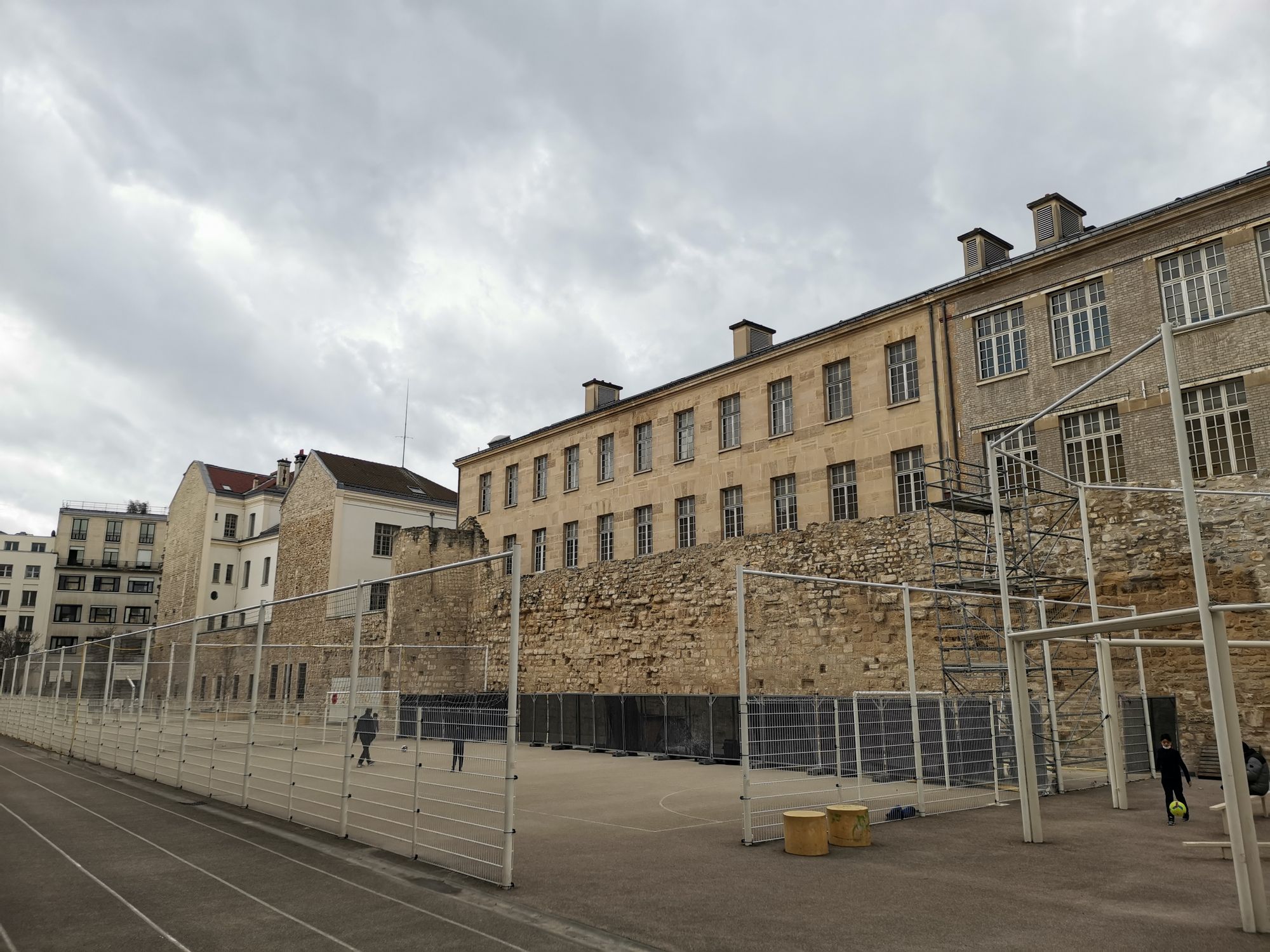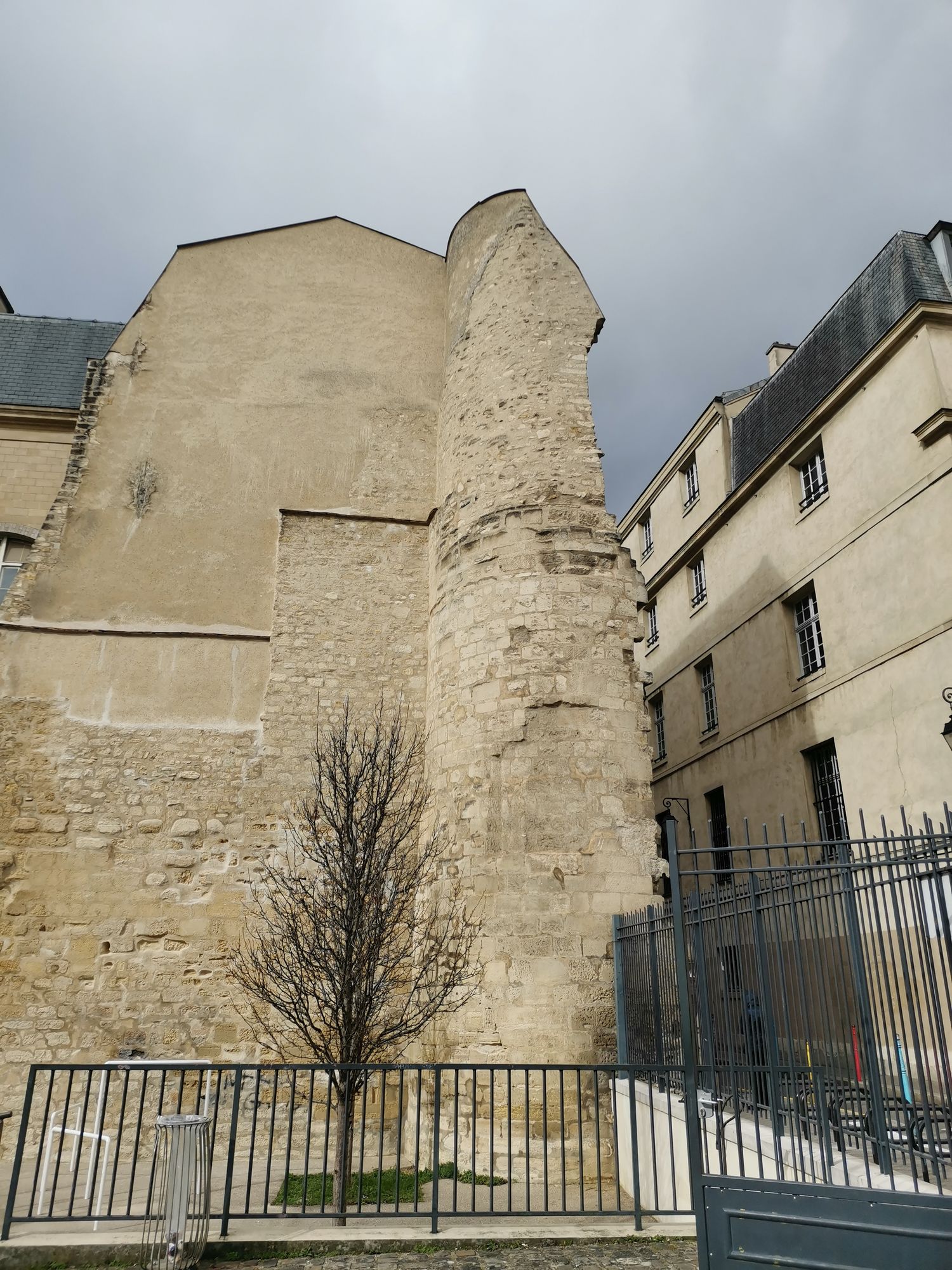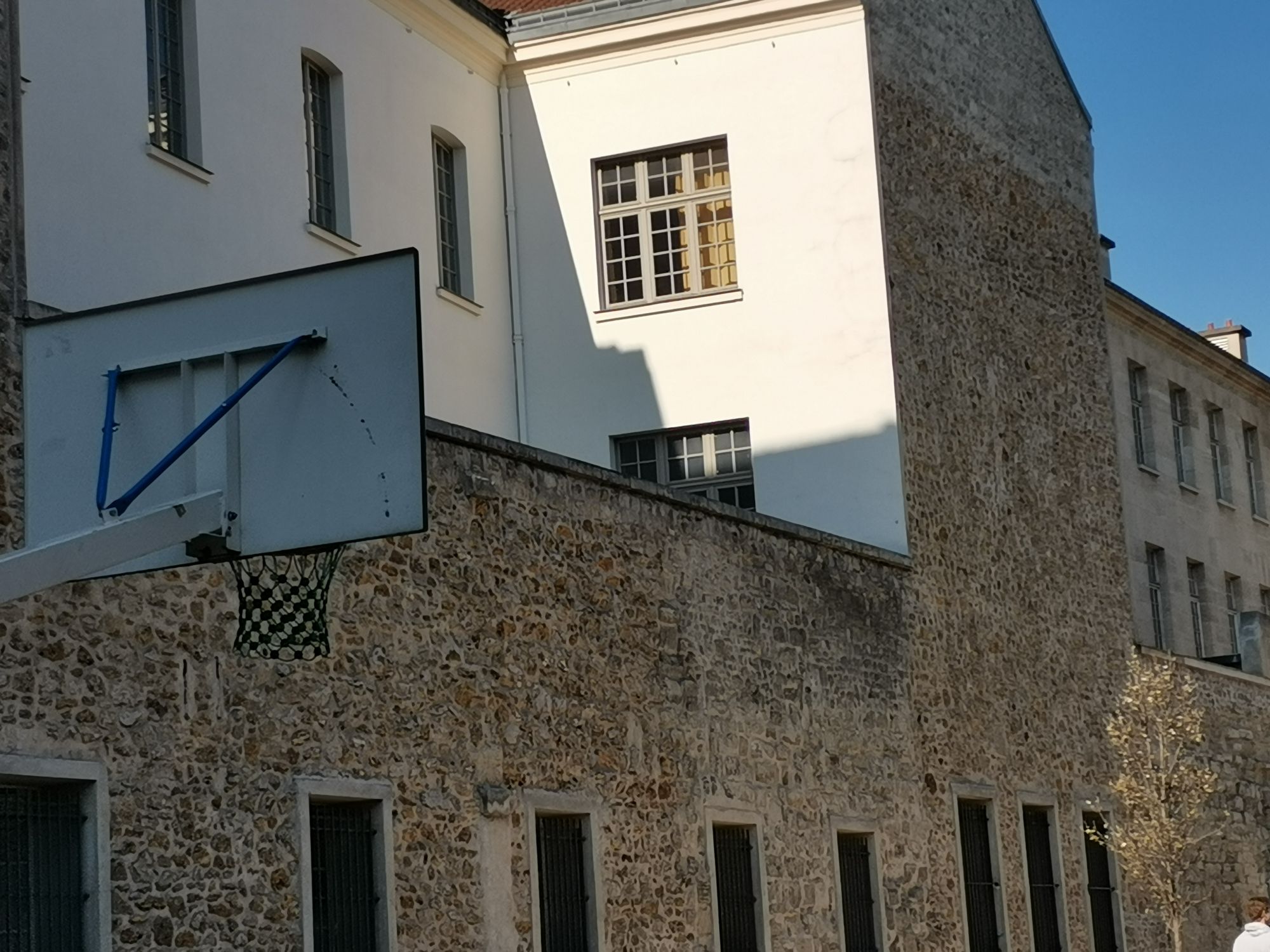Philippe Auguste's medieval enclosure

 At the corner of rue Charlemagne and rue des Jardins-Saint-Paul, you can see the longest preserved section (60 meters) of Philippe Auguste's medieval enclosure.
At the corner of rue Charlemagne and rue des Jardins-Saint-Paul, you can see the longest preserved section (60 meters) of Philippe Auguste's medieval enclosure. Also visible is a quarter of the tour Montgommery, named after the captain of Henry II's Scottish guard who was imprisoned here after accidentally killing the king in a joust. This tower was to be flanked by another to defend the Saint-Paul postern. Another restored tower stands in the middle of the sports field. A 7-metre-high curtain wall links the two towers. Numerous stain marks are visible.
Discover our guided tours of the Marais district.
What is the history of Philippe Auguste's enceinte?
 The enceinte was built against the backdrop of the struggles between Philippe Auguste and the English Plantagenet dynasty. To protect Paris from attack, particularly from the north and west, the King of France, before leaving for the Third Crusade, ordered the construction of a stone wall to protect the capital in his absence.
The enceinte was built against the backdrop of the struggles between Philippe Auguste and the English Plantagenet dynasty. To protect Paris from attack, particularly from the north and west, the King of France, before leaving for the Third Crusade, ordered the construction of a stone wall to protect the capital in his absence.It was a simple wall, dotted with towers.
The right bank was fortified first, from 1190 to 1209, followed by the left bank, from 1200 to 1215. The delay in building the walls on both banks of the Seine was due to strategic reasons: with the Duchy of Normandy in Plantagenet hands at the time, an attack was more likely to come from the northwest. Philippe Auguste decided to build the fortress of the Château du Louvre to reinforce the city's defense against an attack from the Seine.
The left bank, being less urbanized and less exposed, was considered a lower priority.
Philippe Auguste's enceinte covered an area of 253 hectares and was 2,500 meters long on the left bank and 2,600 meters on the right.
Despite the construction in the 14th century of Charles V's enclosure encompassing that of Philippe Auguste on the right bank, the latter was not demolished.